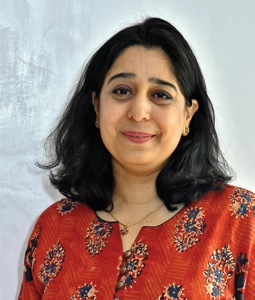A number of customers take a deep look a the beautifully decorated shelves of an earthenware shop for dining utensils, while a few others have already purchased some earthenware at an aestheticly set up shop of earthen utensils on the banks of Anantnag Road in Harnag hamlet.
The store is run by a young man in his early 30s who appears to be earning a living in addition to promoting the ceramic tradition of the past.
The history of pottery can be traced back to prehistoric times – the archaeological sites of Burzahama or for that matter Gufkral in Kashmir. These sites are evident of the fact that the pottery had a number of uses from prehistoric times.
The time hasn’t passed much since the plastic or steel replaced the utensils of the kitchen show up. From drinking, eating to storing grains – the earthenware was everywhere. And the people associated with the pottery were the “real artists who used to chisel marvels from the soil”.
A vast number of potters later in the stage couldn’t survive the evolution of plastic and steel and the art was abandoned, while as a least number of potters still continue to cary forward the legacy amid competition with the modern utensils with their new decorated and colourful clay pots to preserve the dying art.
Abid Hussain, the person who couldn’t continue his education beyond the 12th grade due to financial reasons, has revived the glory of earthenware pottery with the colourful utensils. Hussain hails from a potter family that used to go from village to village selling pottery kitchenware.
“I used to travel from village to village, selling earthenware traditional utensils. However, in the last four years, I rented and established an aesthetic shop to sell all kinds of clay utensils used for daily use,” Hussain told Rising Kashmir.
He has links with several grass root potters with whom he currently works. Distinct potters create distinct earthenware utensils. Some devote their artisan to single products as well, he said.
“I give potters marketing demands for making a certain clay pot, and they earn accordingly. Numerous such potters are connected to me and work and sell their clay-made pottery to me, which I afterward show in the shop for marketing,” he added.
The enterprise is in a prominent location, where a large number of tourists stop to buy traditional clay pots, as well as many people from other locations who come to buy earthenware kitchenware, as clay pottery has numerous health advantages.
Tumbakneer and Kondal (Kangri’s earthenware fire pot) are among the clay pots that continued to survive and weren’t much impacted by the evolution. The Tumbakneer still sounds in the marriage functions while kangri is the part and parcel of winter in Kashmir.
A local who seems to have forgotten the clay pots, but still remembers the containers which women flock used to take on heads and to fetch water from local streams.
“One of the best things that clay containers which were used for water storage were they used to keep water cold apparently from the outside temperature,” he said, adding that the curd in earthenware pot had a different taste.
Health benefits
There exists an aromatic and a very promising earthly smell when food is cooked in clay pots. And importantly the earthenware utensils are least expensive and spending pennies on buying them, people help in positive manner in supporting the dying art to survive.
Moreover, Rising Kashmir spoke to one of the youths whose father is a good artisan in the field of pottery . He has zero interest in pursuing his father’s legacy – the disconnect is because of the avenues at the real potter’s disposal.
“I am running a poultry farm, my father still bakes the clay but, I don’t think he too has that much passion left. We were earning a good sum. My father sent me for engineering all because he was good at this pottery work. And the business was flourishing. Unfortunately, now the art seems to be dying a slow death,” says Zakir Hassan, a potter’s son.
The optimistic thing about my father is that he continues his job and bakes some utensils on a demand for few people, he added.
Ghulam Hassan, a Potter who bakes clay and chisels marvels from it has been into pottery since his childhood. “I am more than 50 years old, but I continue to work in the pottery. These days we have put it on hold and hopefully, after Eid, we will make more utensils,” he said.
About the demand for earthenware utensils he said, the demand had decreased dramatically, and yet some customers urge us to keep it alive. “People reach out to me, but the legacy might face a bad transition – no end to legacy. We are optimistic that potters will emerge again. We are transforming our clay work and the new colourful utensils are part of the transformation. The traditional pottery may face a setback for time being as the shift in generation occurred, but no complete vanishing of pottery,” Hassan hopes.








